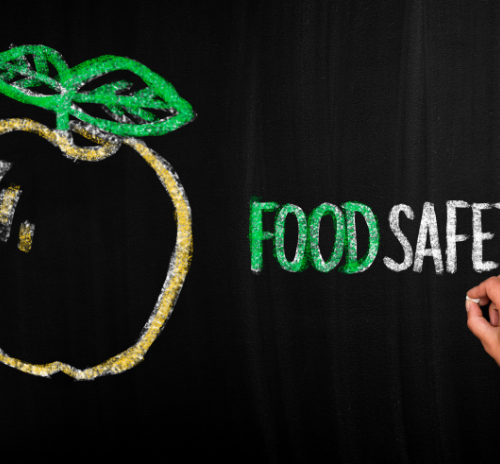National Food Safety Month Tip: Taking Food Prep Safety to the Next Level

When it comes to food safety, almost everything hinges on proper food preparation.
“Cross-contamination prevention starts with receiving and ends with serving; the goal is to keep raw products from touching ready-to-eat items,” says Clay Hosh, instructional design manager for the National Restaurant Association ServSafe food safety and training certification program. “It’s about being mindful in terms of where items are placed.”
Handwashing is critical, as this will help minimize cross-contamination. A culture of food safety awareness helps employees take handwashing seriously, says Francine L. Shaw, founder, and CEO of Hagerstown, Md.-based Savvy Food Safety Inc. “Dedicated handwashing stations that are clean and fully stocked, and that include single-use gloves, must be available for employees,” she says. “Single-use gloves must be changed if interrupted from a task, or they get soiled or torn.”
Shaw emphasizes that proper cleaning of fruits and vegetables is crucial, even for peeled or skinned produce. “Clean [each type of] produce in separate water batches,” she says. “The produce sink also should be cleaned and sanitized between batches.”
Safe prep also relies on the proper labeling of food items. “Appropriately rotate stock using the FIFO (first in, first out) rotation method; doing this will assure depletion of the oldest inventory first,” Shaw says. “Mislabeled products can cause foodborne illnesses and allergic reactions, including deaths.”
Another food prep safety fact: Temperature monitoring helps keep food out of the danger zone, which is between 40 degrees F and 140 degrees F. “Calibrating thermometers daily, especially if dropped and when new, is of great importance, so product temperatures are accurate when taken,” Shaw says. “It also is a good idea to keep a calibration log.”
Food storage goes hand-in-hand with temperature monitoring. “Only pull a small amount of food from the cooler at a time when prepping, so items don’t sit in the temperature danger zone for an excessive amount of time,” Shaw says. “Be sure to keep thermometers in both the cooler and the freezer, even if there are digital displays on the outside. You never know when they may malfunction.”
As part of its National Food Safety Month educational series, the National Restaurant Association offers six tips for safe food prep:
- Stay away from contaminated food: This includes rejecting the delivery of food items that appear contaminated. Potential signs of food might be contaminated includes dented cans, water stains on the packaging, or the packaging is broken open.
- Store food to prevent cross-contamination: Key steps here include designating storage areas for specific food items, storing food at least 6 inches off the floor, and storing food in containers intended for food use.
- Prepare food to avoid cross-contamination: Clean and sanitize workstations, cutting boards, equipment, and utensils before each use. Prep raw items separately from ready-to-eat items.
- Serve food to prevent cross-contamination: Key steps here include not handling ready-to-eat food with bare hands; staff should use tongs or gloves instead. And when serving orders to guests, don’t touch the food contact surfaces, which means holding flatware by the handles; glasses by the middle, bottom, or stem and dishes by the bottom or edge.
- Store utensils to prevent cross-contamination: Store utensils and equipment that will come in contact with food at least 6 inches off the floor. Store glasses and cups with the bottom side up. Store utensils with the handles up, too.
- Protect guests with allergies: Identify which items on the menu contain allergens and be prepared to discuss the preparation of individual menu items with guests.



